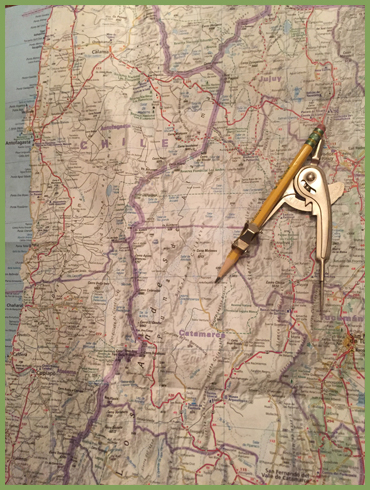
A remarkable celestial event is coming to a very special place on July 2, 2019. For a few brief minutes of that date, a total eclipse of the sun will be visible over a portion of the Southern Hemisphere.
The eclipse and its shadow first fall upon earth a thousand miles east of New Zealand. As the moon orbits the earth at a speed faster than the earth rotates on its axis, the shadow it casts will continue eastward, stretching thousands of miles over the Pacific Ocean to make landfall about 90 minutes later, near La Serena, Chile. The shadow of totality slants across Chile and crosses into Argentina, ending a few minutes later with the setting sun in the suburbs of Buenos Aires.
For those who enjoy both science and literature, the natural phenomenon of a total solar eclipse couldn’t happen over a more energizing locale. Argentina, its people and pampas, inspired Jorge Luis Borges, whose prose did more than describe new worlds: His imagination created them.
Chile is remarkable place, a 2,653 mile stretch of Pacific Patagonian coastline. The rocky and mountainous coast provides sandy beaches and beautiful caletas – bays that shelter towns and travelers. The nation’s interior finds some of the tallest mountains, ranges and volcanoes in the world. Its fertile valleys shelter rich farmlands that help feed a nation and planet.
Chile’s skies are among the clearest on earth, making its mountains and high desert plains home to many of the world’s great astronomical observatories. The Cerro Tololo Inter-American Observatory, the Gemini South Observatory, and La Silla European Observatory are each in the path of totality.
To those who study literature, Chile is the nation of poets. It has given the world two Nobel Prize winning authors: Gabriela Mistral and Pablo Neruda. In addition to their national culture, both credited much inspiration to their homeland’s natural beauty.
For eclipse watchers, Chile brings a unique artistic circumstance this year. The total solar eclipse will happen about 14-degrees over the northwest horizon. If weather and camanchaca cooperate, photographers will capture some truly wonderful images from beaches, mountains, and historic places.
So it is in this unique place, home to poets and astronomers and 18 million more good people, that this writer plans to witness and chronicle the total solar eclipse of 2019. I’d also like to share how to safely observe and photograph an eclipse of the sun, so others may enjoy this wonder of nature.
Eclipses of the sun are coming to the mainland United States in 2023 and 2024. The former will be an annular solar eclipse, where the moon does not cover the entire face of the sun, leaving what appears to be a ring of fire around the lunar perimeter. The latter will be a total solar eclipse, a 100-mile wide path from Texas to a tiny corner of Michigan just north of Toledo, Ohio.
In the meantime, I’ll get started with the planning. July 2 is just around the corner. I can hardly wait.
